This article was co-authored by wikiHow Staff. Our trained team of editors and researchers validate articles for accuracy and comprehensiveness. wikiHow's Content Management Team carefully monitors the work from our editorial staff to ensure that each article is backed by trusted research and meets our high quality standards.
There are 8 references cited in this article, which can be found at the bottom of the page.
This article has been viewed 28,848 times.
Learn more...
A wok is a Chinese pan that is most often used for stir-fry, though it can also be used for deep frying, steaming, and braising meat. Woks come in several shapes, sizes, and materials. A wok is a worthwhile investment if you regularly cook. To obtain a wok, you should research the different types, buy one from an ideal location, and learn to take care of it.
Steps
Choosing the Right Type of Wok
-
1Choose a material. Woks are made out of several different materials, though the traditional wok is made of cast iron. Each material has its own advantages and disadvantages. Every type of wok will work for your stir-frying, steaming, or frying needs, except Teflon, which should not be used for frying. The different materials of woks are:
- Cast iron. This is the traditional material. This type of wok takes more time to heat up, but it cooks food evenly and retains heat longer. Iron is a solid choice, but it also has its drawbacks. Cast iron woks rust easily, so you will need to carefully dry it before and after use. It is also recommended to avoid cooking acidic food and greens in this type of wok.
- Aluminum wok. Iron woks are thick and heavy, but woks made of aluminum are light and thin. Aluminum is a great conductor of heat, but it does not retain heat very well. It is also not as durable as an iron wok.
- Teflon wok. A Teflon, or non-stick, wok is ideal for steaming, stewing, and boiling. Do not use this type of wok if you plan to deep fry or stir-fry food because the non-stick coating will come off into the food at high temperatures.
- Carbon steel. This is possibly the most recommended type of wok. It is typically the most inexpensive choice, and it is the most durable. A carbon steel wok also heats up quickly and evenly, and is almost a non-stick surface if cared for properly.[1]
-
2Decide on a bottom. Woks with round bottoms are traditional and most common, but flat bottoms have been introduced in recent years. A round bottom is ideal if you cook on a gas stove. Flat bottom woks are made for electric stoves. Though the choice depends on taste and stove type, most cooks still recommend to use a round bottom if possible.
- Food can burn easier with a flat bottom wok because heat is distributed mostly throughout the bottom of the pan.
- It is easier to use a spatula on a round bottom pan.
Advertisement -
3Determine a size. The size of the wok you choose depends on the amount of people you want to feed. Typically, a wok that is 14 inches in diameter is family-sized. For travel, woks come as small as 8 inches. Woks also can be as large as 79 inches, but woks this large are usually only used in restaurants.
-
4Choose a type of handle. There are several types of handles, but they all serve the same purpose. The handles are used to lift the wok off of the burner. There are woks that come with two loops on each side as handles, a long metal or wooden handle, and ones that have a long stick on one side and a metal loop on the other. Choose the type of handle based off of which will be easiest for you to lift.
- The easiest type of handle is considered to be to be a long stick on one side, and a loop on the other.
- Chefs typically use a long handle for easy tossing.
Buying a Wok
-
1Decide on a buying method. Most cookbooks recommend that you go to the nearest Chinatown to buy a wok. These woks are usually inexpensive and durable. If going to Chinatown is not possible, there are other options. You can go to a department store with a cooking section, a cooking specialty store, or you can purchase one on the internet.[2]
- If you purchase a wok from the internet, make sure you choose a legitimate website. Also make sure to check the material and reviews.
- Look at the online catalog before going to a store if you are looking for a specific type of wok.
-
2Choose a price range. Luckily, the highest recommended woks are the least expensive. Woks bought in Chinatown are typically around $7. Elsewhere, you can find a good and durable wok for about $30. Woks can run as high as $200 or more, but spending that much is usually not necessary.[3]
-
3Check for durability and weight. If you buy a wok in person, check the quality and weight. If possible, take the wok in your hands and press slightly on it. The metal should give in very little if aluminum, but usually, it should not give in at all. Pick the wok up to make sure it is not too heavy for you to lift.
- Consider that the wok will be heavier with food in it.
-
4Buy accessories. Many woks will come with some accessories in the box, but the accessories are typically weak and not made well. You will need to purchase accessories to get the most out of your wok. Necessary accessories to buy are:[4]
- A domed cover.
- Two long-handled Chinese spatulas
- A shallow Chinese ladle with a large bowl. This can be either metal or wooden.
- Optional accessories are extra-long cooking chopsticks and steamer racks (metal, wooden, or bamboo).
-
5Buy a wok ring. A wok ring is used to raise the bottom of the pan away from the heat. Some woks come with rings, but often they do not. Wok rings are needed for round bottom woks, but they are not necessary for flat bottom woks. Rings are typically needed for gas stoves, but they are also recommended for electric stoves to lift the wok slightly above the coil.[5]
- There are two different types of rings. One is made with thick metal with open sides, and the other type is made of enclosed metal with small holes for venting. The former is better suited for gas stoves, and the latter is best for electric stoves.
- Woks rings come in many different sizes and depths. Choose one that fits best on your burner. You may need to take a measurement of your burner before purchasing a wok ring.
- It is recommended to purchase an extra wok ring for round bottom woks to place on the counter after removing it from the stove.
Taking Care of Your Wok
-
1Clean your new wok. New woks come with a protective coating that you will need to scrub off. This coating is put on woks to keep them fresh in the store. To remove it, scrub it with soapy water and dry it with a towel. Then, put it on the stove on medium hear to evaporate any moisture to prevent rusting.[6]
-
2Season it for flavor. You will need to season the wok to add flavor to your cooking. To do this, turn the heat on the oven to the highest setting. Then, pour corn, vegetable,or peanut oil on the bottom of the pain. Spread the oil around with a paper towel held by tongs. Repeat this process frequently until you achieve a thick, black patina on the bottom of the pan.[7]
- It is also an option to add ginger and/or spring onions to the seasoning process.
- Keep your windows open while you season because it will produce a lot of smoke.
-
3Cook with the wok. There many ways to cook with a wok, and there are even more potential ingredients. To make stir-fry, make sure your wok is very hot. There should be smoke rising from it to indicate this. Next, add oil to the pan. Then you can add your ingredients. Only stir your ingredients to prevent burning. Spread the food evenly and along the sides of the pan while cooking.[8]
- Before adding ingredients, flick water onto the wok. It is hot enough to begin cooking if the water evaporates quickly.[9]
- Add cold oil to wok when it is hot. Do not add cold oil to a cold wok.
- Most at-home stoves do not get to a high enough temperature to get the most flavorful food, so it is recommended to cook in batches.
-
4Clean it well. Clean your wok with hot water and a soft sponge. Some choose to clean with soap, but it is recommended to avoid soap if possible. Once you are done wiping it, put it back on the stove to evaporate any water.[10]
- If something is sticking to the pan, add salt and scrub it gently with a paper towel.
- Wipe the wok with oil and a paper towels for the first few few uses before storing it away.
- Your wok will eventually change from silver, to brown, to black. This is a good thing. A permanent, black patina assures a flavorful meal each time you cook.[11]
Warnings
- Under no condition should you ever use metal utensils or scrubbers on a non-stick wok. It will weaken the coating, which is toxic.⧼thumbs_response⧽
- Be cautious when using a hot stove, especially when hot oil is involved.⧼thumbs_response⧽
- Check to make sure your ingredients are fresh before cooking.⧼thumbs_response⧽
Things You'll Need
- Wok
- Corn, vegetable, or peanut oil
- Cooking ingredients
- Soft sponge
- Paper towel
- Water
- Stove
- Wok accessories
References
- ↑ http://www.seriouseats.com/2010/06/equipment-how-to-buy-a-wok-which-wok-is-the-best.html
- ↑ http://www.nytimes.com/1982/12/22/garden/buying-a-wok-plain-or-fancy-what-to-look-for-and-avoid.html?pagewanted=all
- ↑ http://www.seriouseats.com/2010/06/equipment-how-to-buy-a-wok-which-wok-is-the-best.html
- ↑ http://www.nytimes.com/1982/12/22/garden/buying-a-wok-plain-or-fancy-what-to-look-for-and-avoid.html?pagewanted=all
- ↑ http://www.thaifoodandtravel.com/features/woktype.html
- ↑ http://www.lifehacker.com.au/2016/09/how-to-buy-and-take-care-of-a-wok/
- ↑ http://www.lifehacker.com.au/2011/08/how-to-season-a-wok/
- ↑ http://www.thaifoodandtravel.com/features/wok1.html
- ↑ http://www.lifehacker.com.au/2016/09/how-to-buy-and-take-care-of-a-wok/
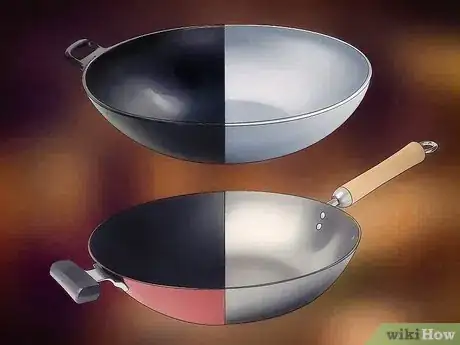
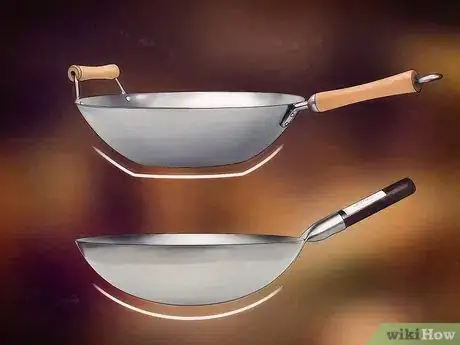
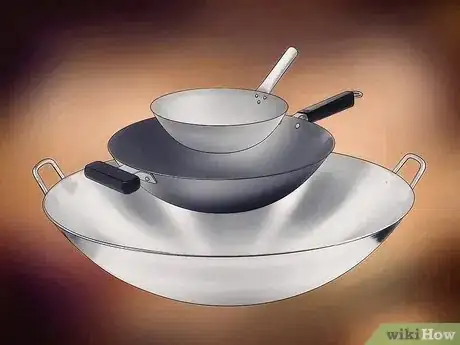
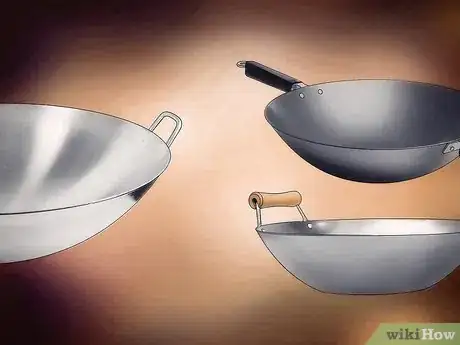
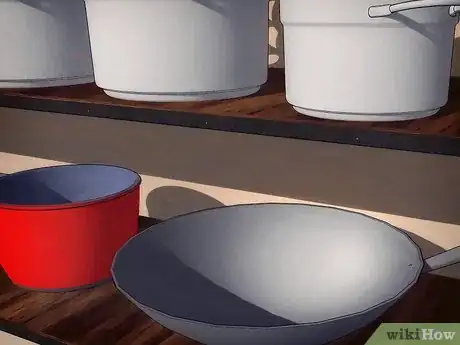


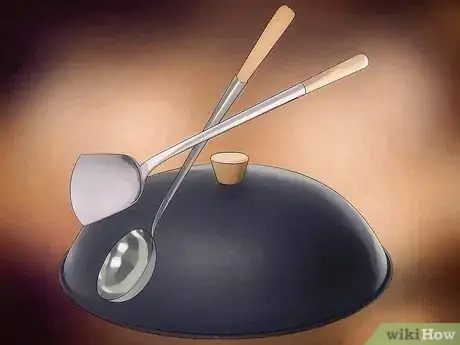

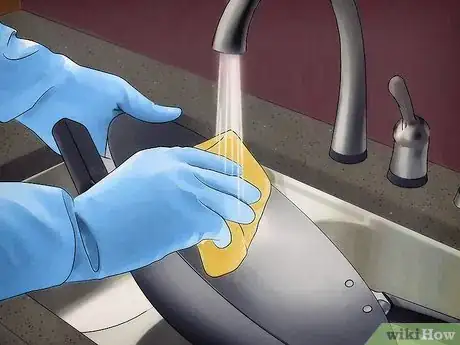

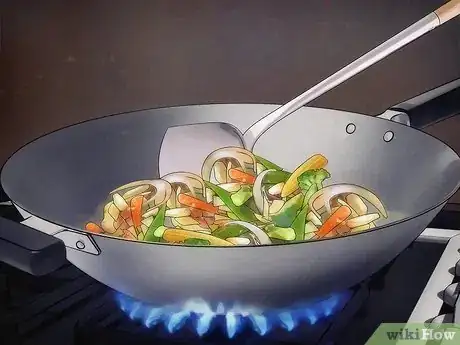


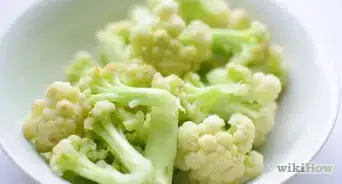

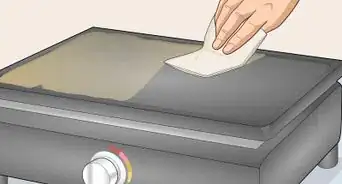









-Step-12-Version-2.webp)



































